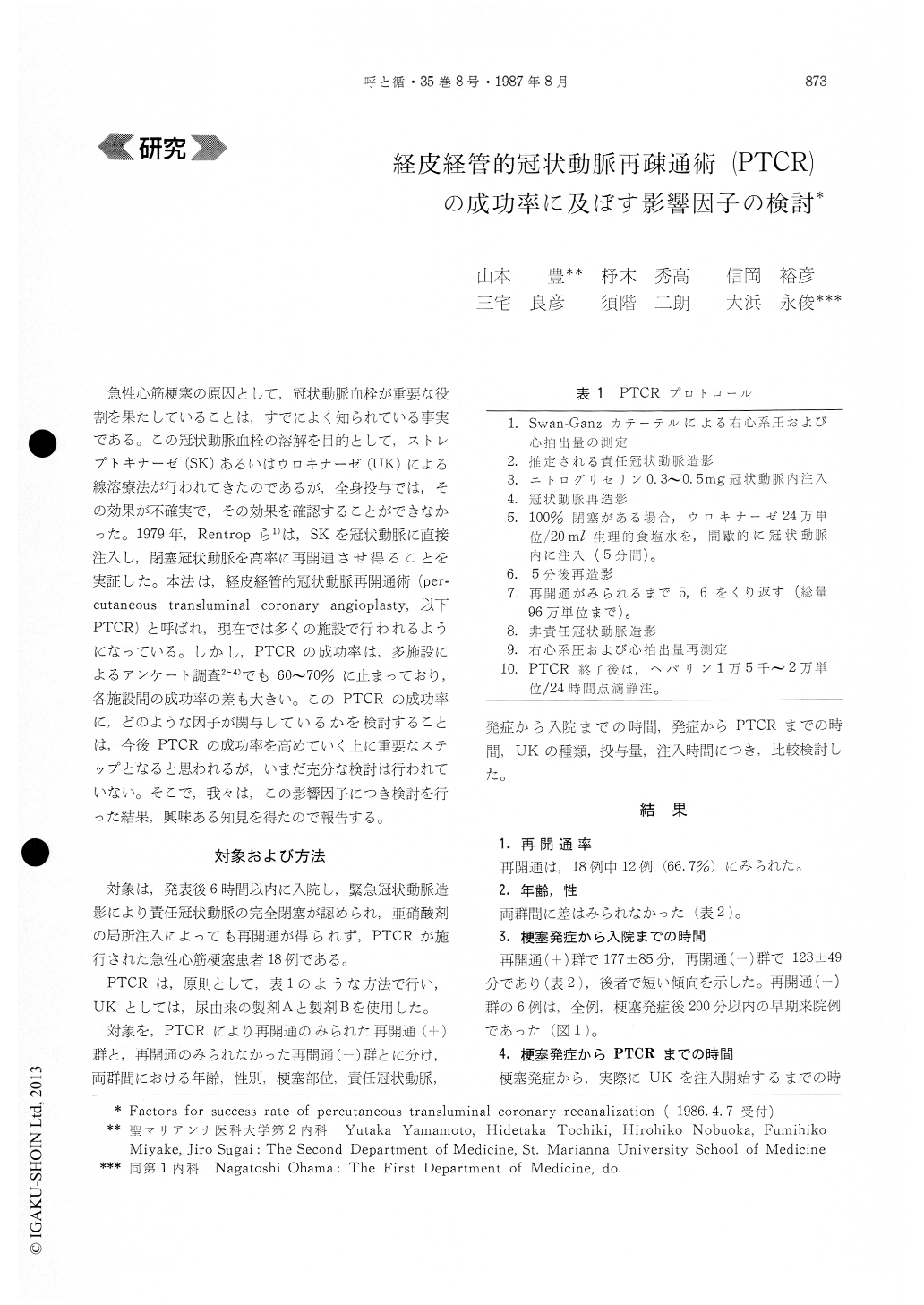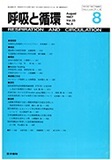Japanese
English
- 有料閲覧
- Abstract 文献概要
- 1ページ目 Look Inside
急性心筋梗塞の原因として,冠状動脈血栓が重要な役割を果たしていることは,すでによく知られている事実である。この冠状動脈血栓の溶解を目的として,ストレプトキナーゼ(SK)あるいはウロキナーゼ(UK)による線溶療法が行われてきたのであるが,全身投与では,その効果が不確実で,その効果を確認することができなかった。1979年,Rentropら1)は,SKを冠状動脈に直接注入し,閉塞冠状動脈を高率に再開通させ得ることを実証した。本法は,経皮経管的冠状動脈再開通術(per—cutaneous transluminal coronary angioplasty,以下PTCR)と呼ばれ,現在では多くの施設で行われるようになっている。しかし,PTCRの成功率は,多施設によるアンケート調査2〜4)でも60〜70%に止まっており,各施設間の成功率の差も大きい。このPTCRの成功率に,どのような因子が関与しているかを検討することは,今後PTCRの成功率を高めていく上に重要なステップとなると思われるが,いまだ充分な検討は行われていない。そこで,我々は,この影響因子につき検討を行った結果,興味ある知見を得たので報告する。
Factors for success rate of percutaneous translu-minal coronary recanalization (PTCR) were analyzed in 18 cases of acute myocardial infarction (AMI). Age and sex of the patients, time delay from the onset of AMI to PTCR (if within 6-7 hours), location of the infarction or location of the obstruction of coronary arteries did not affect the success rate. Maximal trial dose and optimal infusion time of urolcinase (UK) were thought to be 960, 000 U and 240,000 U/10 min, respectively. Substantial difference in the success rate was observed between the two UK products. This evidence should continuously be paid attention.

Copyright © 1987, Igaku-Shoin Ltd. All rights reserved.


